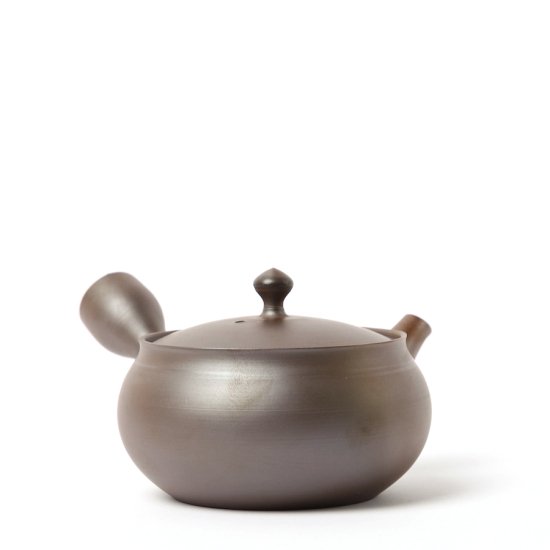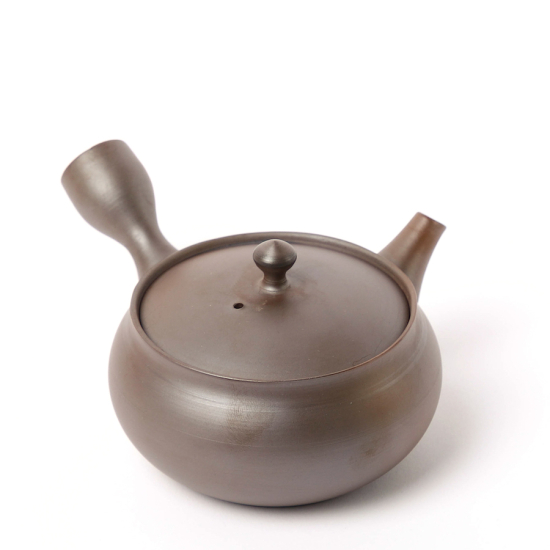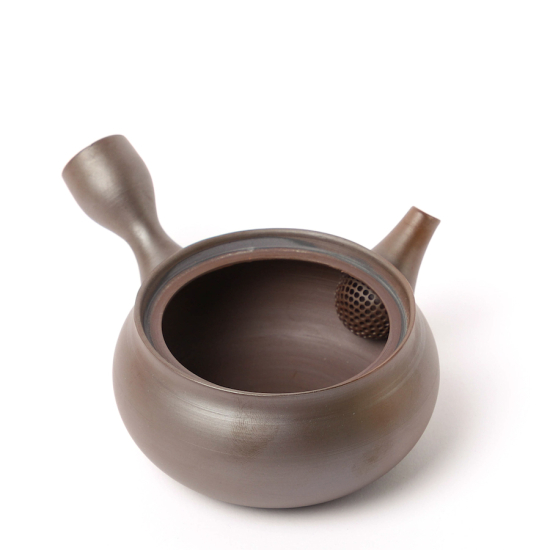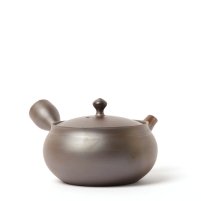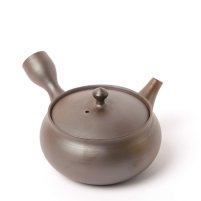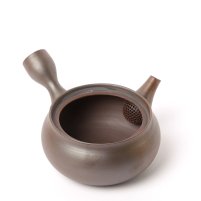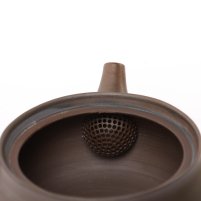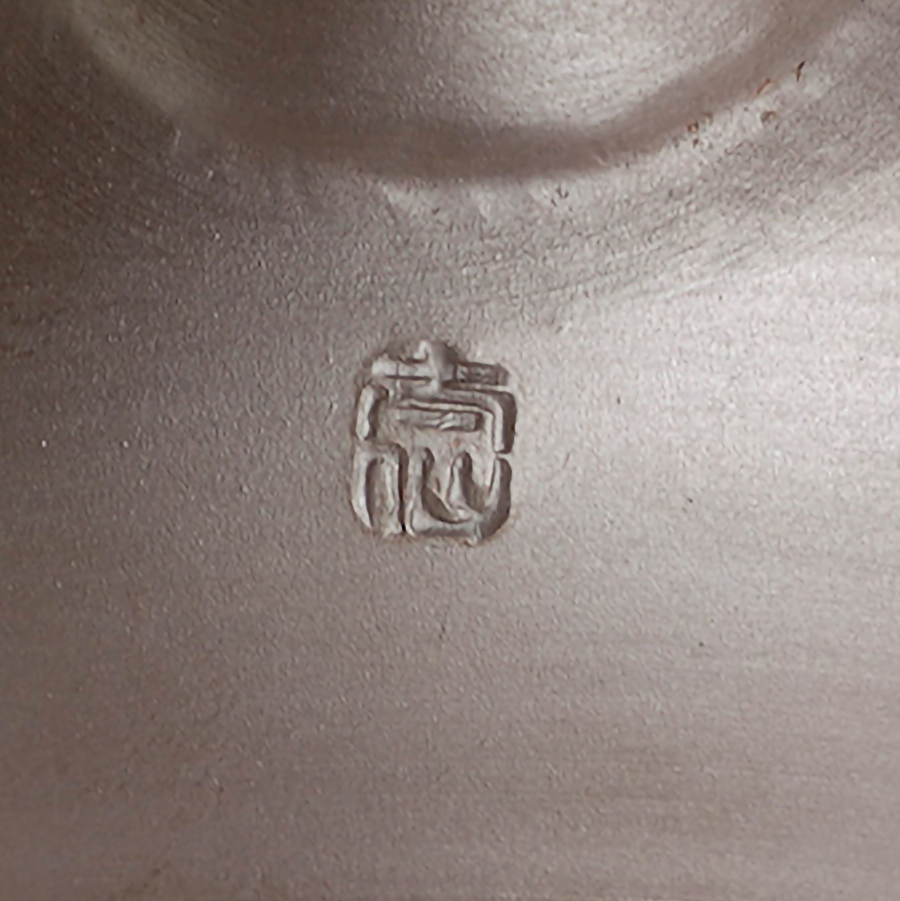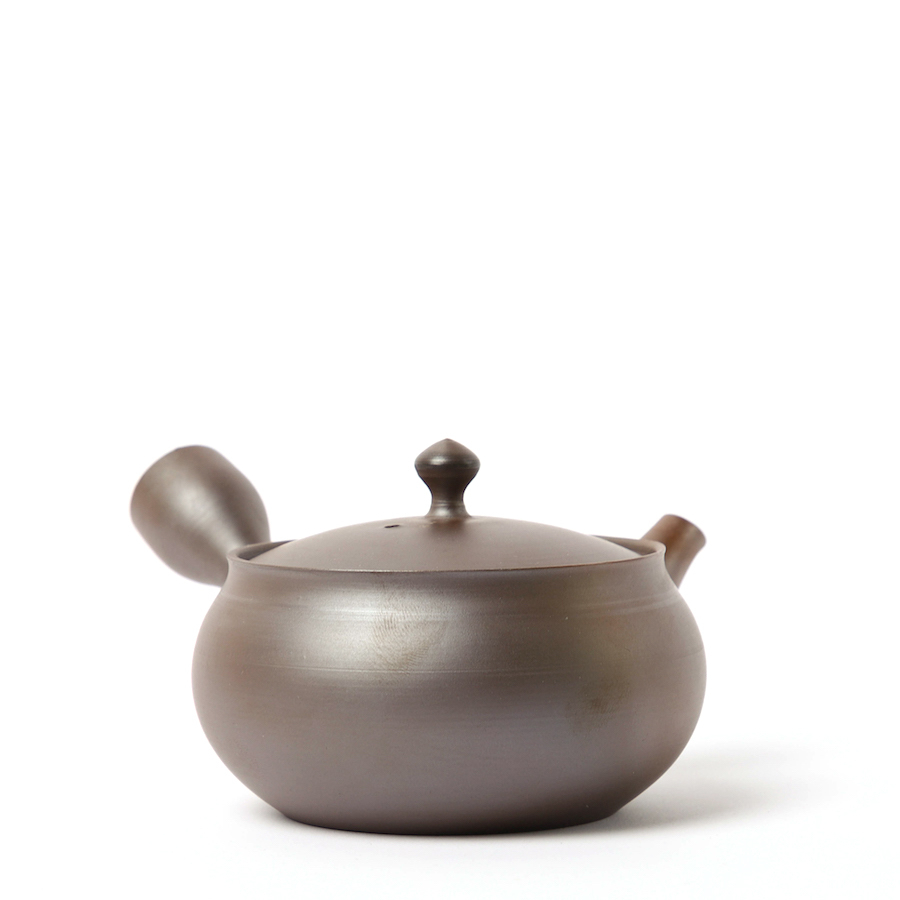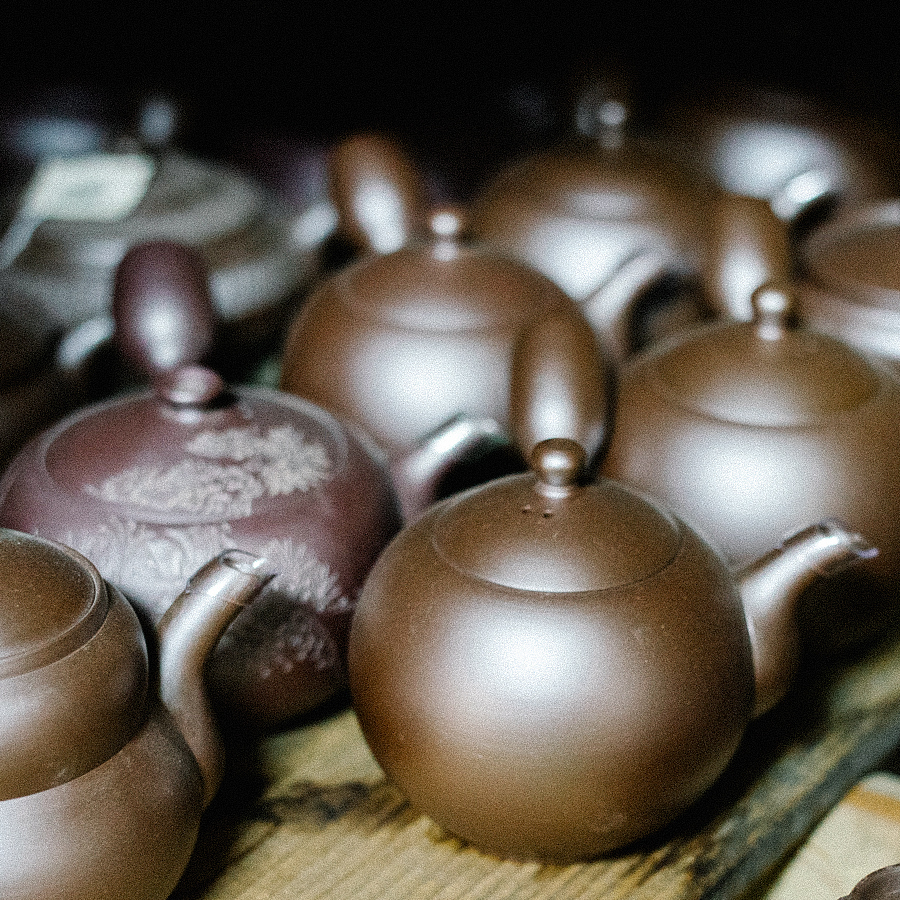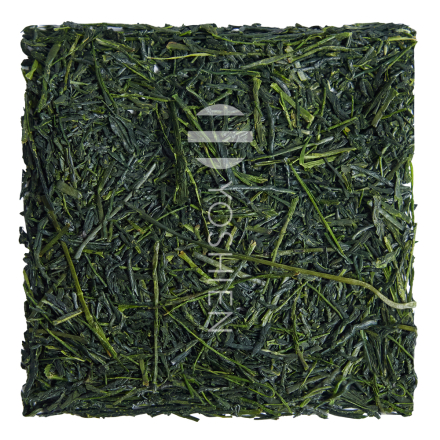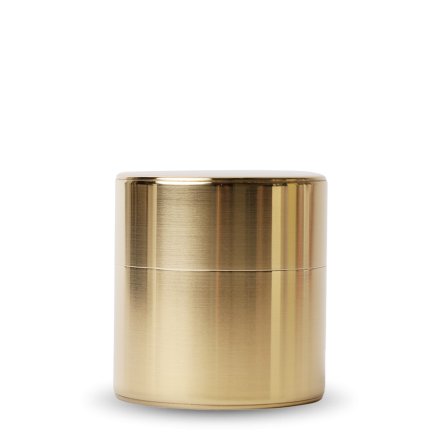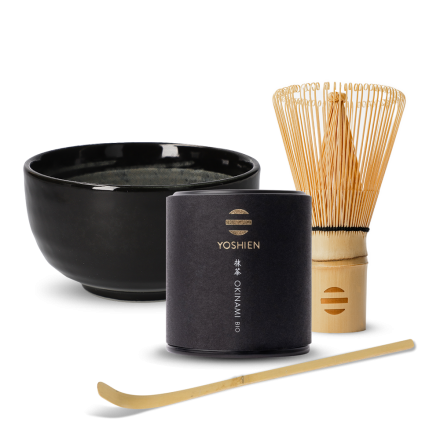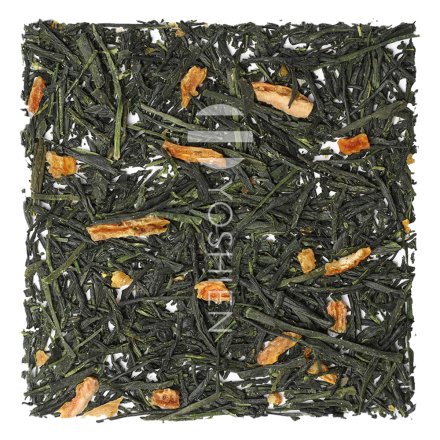Shidei banko will quickly develop a patina and become more glossy with use. It is natural that fingerprints will stand out on the surface in the first few months but these will begin to subside as the surface starts to develop a deep lustre. When cleaning, only use water and a soft cloth, then leave to air dry naturally. Do not use detergents or put in the dishwasher. Hard water may cause limescale deposits to develop, in which case rinse with soft bottled water, then wipe with a soft cloth.
Banko Kyusu
HIRA 平
Taisen
SKU
4109
A classic purple shidei Banko kyusu by award-winning Certified Traditional Craftsman, Yamamoto Taisen. This Japanese teapot has an elegant form with a pointed, onion dome-like knob and a hand-perforated ceramic strainer. Best with umami-rich green teas, makes up to three small cups.
| Type | Side-handle Banko-yaki kyusu |
| Origin | Yokkaichi, Mie Prefecture, Japan |
| Maker | Taisen |
| Volume | 240ml |
| Dimensions | Ø10.5 x 5.3cm |
| Weight | 246g |
| Material | Ceramic |
| Decoration | - |
| Finish | Unglazed (yakishime) |
| Manufacture | Handmade on potter's wheel (rokuro) |
| Strainer | Built-in ceramic debeso filter |
| Artist's Stamp | On base |
| Packaging | Signed wooden box (kiribako) |
| Each item is handmade therefore colour and size may vary slightly. |
In stock



